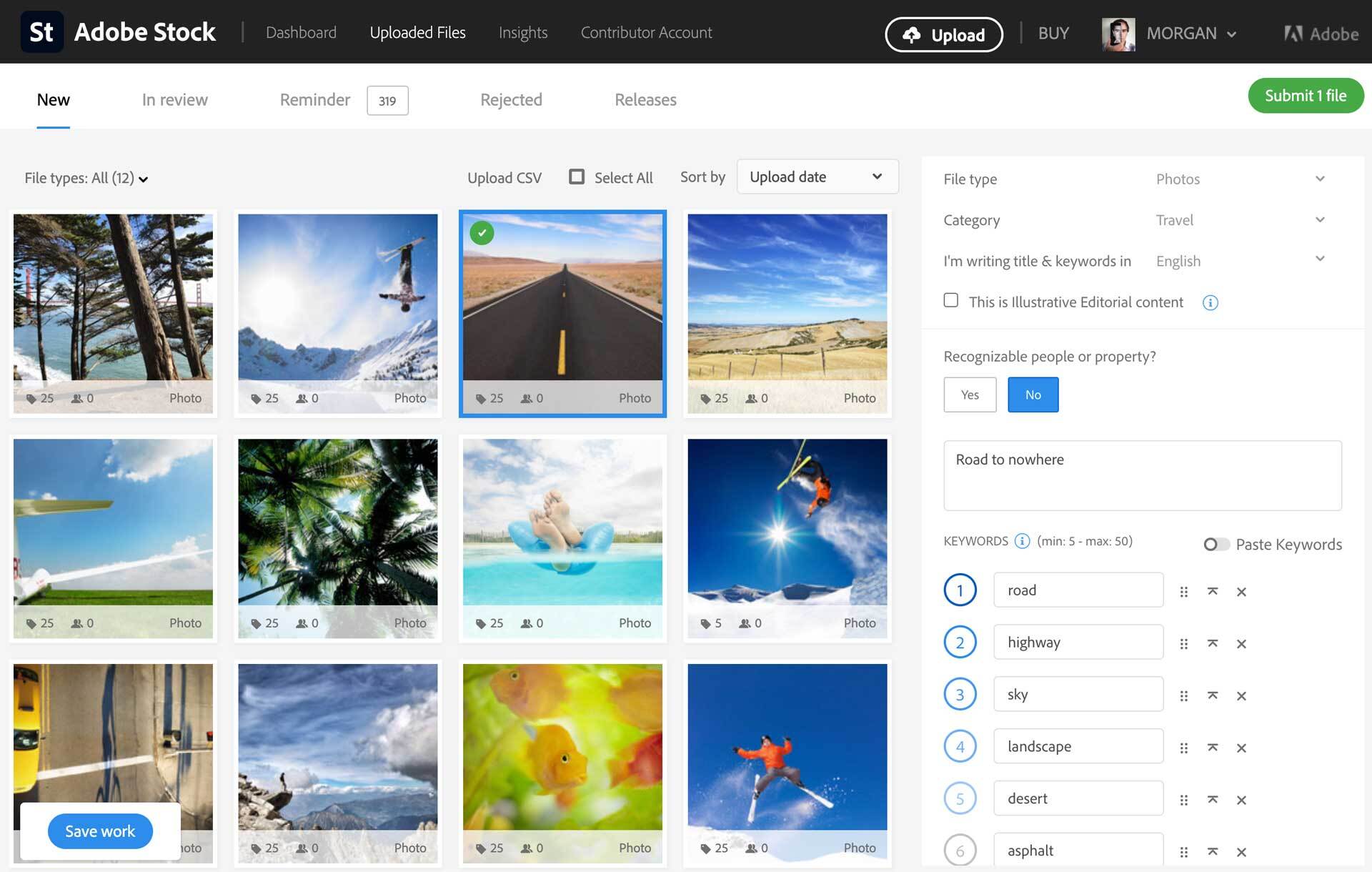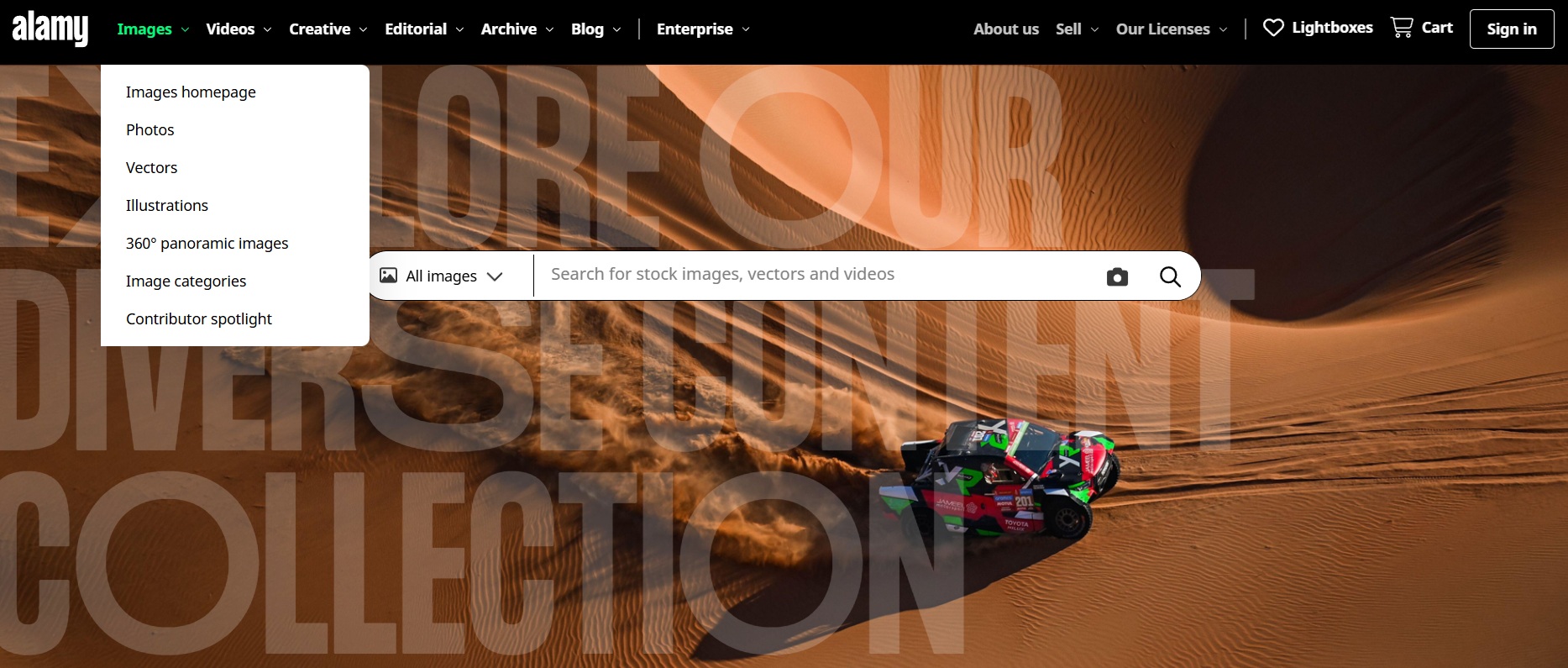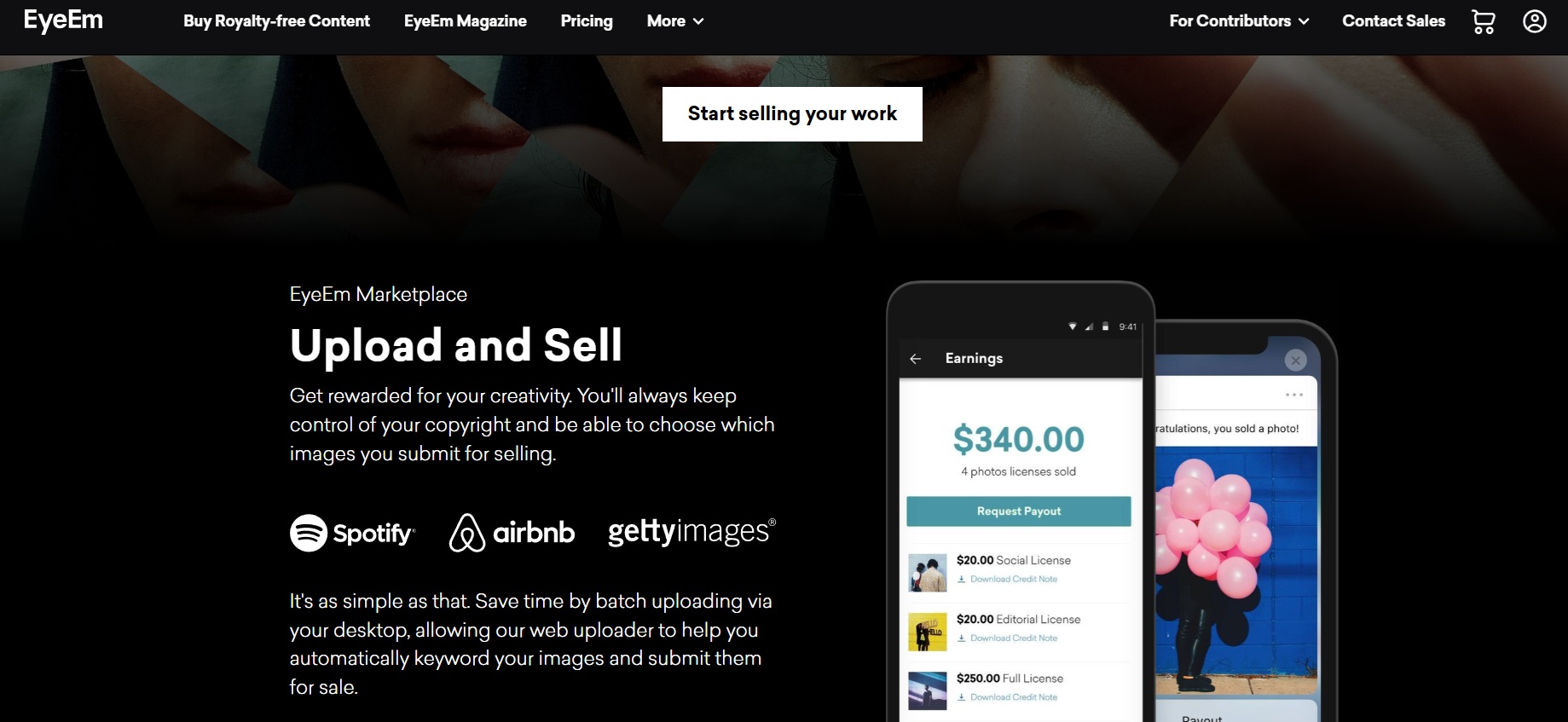Every company requires marketing content to advertise its goods and services in the modern digital environment. And that marketing just wouldn’t be complete without excellent, eye-catching photos. Photographers can help with this because they have more chances than ever before to make money from selling their images online.
Regardless of your level of experience, there are several internet marketplaces where you may sell your images and make a living from your hobby. By selling your photos on these platforms, you can not only show off your images to a worldwide audience but also earn passive cash.
All you have to do is choose the appropriate website, post your images, offer them for sale, and begin receiving money from people and companies.
If you’re wondering, what is the best website to sell photos online? — you’re in the right place. In this article, we’ve compiled a list of the top 7 websites to sell photos online, helping you reach millions of potential buyers worldwide and start monetizing your talent from anywhere!
1. Shutterstock – Sell Your Photos to a Global Market

One of the top websites for selling stock images, graphics, and videos to companies, marketers, and artists is Shutterstock. With its extensive collection of royalty-free material and adaptable licensing options, it makes it simple for people and organizations to locate and use content without worrying about copyright concerns. Shutterstock is unique because of its sophisticated AI-powered search capabilities, which enable users to locate the most pertinent information fast and efficiently depending on their requirements. This increases the likelihood that others will find and download your images.
You must apply and send in a portfolio of your work for consideration before you can begin selling on Shutterstock. After your photographs are accepted, you may submit them for free, and Shutterstock keeps a cut of every sale. Your chances of consistently generating sales are increased by the platform’s user-friendly interface, which accommodates photographers of all skill levels and has a wide-ranging, international clientele.
Remember that Shutterstock has high requirements for quality, therefore your photos must be properly processed and have a good resolution. Depending on their degree of contribution and the amount of downloads, contributors usually receive royalties ranging from 15% to 40% per image.
2. Adobe Stock – Earn Money by Selling Photos Seamlessly Through Creative Cloud

Adobe Stock is a highly acclaimed and extensively used marketplace for photographers and creatives looking to monetize their work. Adobe Stock‘s seamless integration with Adobe’s Creative Suite, which includes industry standards like Photoshop and Lightroom, making it exceedingly simple for photographers to submit and sell their photographs directly from the tools they regularly use.
One of the primary benefits of Adobe Stock is access to millions of Adobe Creative Cloud users globally. This dramatically raises your exposure and improves your chances of earning consistent sales. Its strong connection with Adobe products makes it an excellent alternative for professionals currently working in the Adobe ecosystem.
To begin selling your photographs, just create an Adobe Stock contributor account, submit your images, and include relevant keywords to increase discoverability. The site accepts high-quality, royalty-free photographs, illustrations, and vector graphics.
In terms of profits, Adobe Stock has one of the industry’s most competitive royalty rates, with contributors receiving 20% to 60% per sale, depending on the license option – a bigger payment than many other stock picture websites.
3. Alamy – Sell Unique and High-Quality Photos to a Global Audience

Alamy is well-known for its large and broad library of visual content, which ranges from typical stock photography to artistic and specialty photos. This diversity draws a diverse spectrum of clientele from over the world, including publishers, corporations, designers, and media outlets, giving it a great platform for photographers who specialize in unusual or difficult-to-find topics.
The procedure of uploading and selling images on Alamy is straightforward and non-exclusive, allowing you to sell your photos on other platforms concurrently. However, Alamy has strong quality requirements, so you’ll need to be proficient at shooting high-resolution, properly edited photographs and employing effective keywords to increase search presence.
With millions of global clients and a solid reputation for fair treatment of authors, Alamy provides an excellent chance to enhance your profits while accessing a diverse audience across numerous sectors.
Unlike many other stock photo sites, Alamy offers one of the highest commission rates in the business, with photographers earning up to 50% on exclusive photographs and 40% on non-exclusive images, making it an excellent alternative for generating revenue from your work.
4. iStock – A Beginner-Friendly Platform Backed by Getty Images

iStock, a subsidiary of Getty Images (next on the list), is intended to serve a larger market of small businesses, freelancers, and independent content creators searching for more cheap stock photographs. While Getty Images concentrates on high-end licensing for huge organizations, iStock thrives on bulk sales at lesser prices, making it an excellent alternative for expanding your client base.
Compared to Getty, iStock‘s contributor criteria are more approachable, making it perfect for beginning and intermediate photographers. Contributors can contribute a wide range of content, including editorial photography, ordinary lifestyle shots, and artistic and expressive photographs.
When it comes to revenue, iStock pays contributors 15% to 45% royalties each sale, depending on the uniqueness of the image and the kind of license. While the commission rate is smaller than Getty‘s, iStock‘s broader and more diversified client base might result in more sales volume and more regular income.
Photographers may also pick between exclusive and non-exclusive work, with exclusive contributors receiving larger percentages.
Overall, iStock is a fantastic platform for photographers wishing to expand their market while using the Getty Images network’s global reputation and distribution ability.
5. Getty Images – Sell High-End, Exclusive Photos to Premium Clients

Getty Images is one of the oldest and most prominent platforms for photographers looking to sell unique, high-quality photographs to top-tier customers including media outlets, advertising agencies, and multinational organizations. Getty is well-known for its tough standards and selective contributor procedure, which favor professional, high-resolution material that satisfies the wide and demanding demands of premium purchasers.
Photographers using Getty can select between exclusive and non-exclusive licensing for their work, with exclusive photos receiving a higher royalty rate. Getty Images‘ reputation and clientele make it an appealing alternative for professional photographers looking to collaborate with world-renowned brands and earn a premium for their top-tier images.
Applying to Getty Images usually entails submitting a portfolio for inspection, and admission may be challenging — but the potential benefits are substantial.
While Getty pays the initial hosting and platform fees, it charges a hefty commission. Contributor royalties often vary between 20% and 30%, depending on the licensing agreement and exclusivity, with the remaining paid to Getty.
6. EyeEm – A Modern Platform Powered by AI for Selling Authentic Photos

EyeEm is a new and unique platform that appeals to both amateur and professional photographers. What distinguishes it is the use of AI-powered tagging and search technology, which helps photographers in organizing their work and making it easily discoverable to potential purchasers.
EyeEm focuses on genuine, lifestyle-oriented photography, which is in great demand among companies and media outlets seeking natural, real-world imagery for commercial usage. If you specialize in candid, daily photography, this is a venue to consider.
Photographers may license their photographs through the EyeEm Market or broaden their reach by collaborating with bigger platforms such as Getty Images via EyeEm‘s distribution network, resulting in increased visibility and revenue opportunities.
One of EyeEm‘s main advantages is its hefty income sharing. Contributors often earn 50% of each sale and keep full control of their photographs, allowing them to sell on several channels. Furthermore, EyeEm routinely offers brand-sponsored photo competitions, which allow photographers to earn extra money and get recognition by providing material for specific campaigns.
EyeEm also has a community function, which allows photographers to interact, learn, and grow with other creatives from all around the world.
7. Canva – Sell Your Photos to Millions Through a Leading Design Platform

Canva is a popular graphic design website, noted for its user-friendly design tools. Beyond that, Canva allows photographers to sell photographs online through its enormous media library, making it an excellent method to make money from photography.
Canva has millions of users, ranging from individual content producers to major corporations, giving photographers massive visibility and the possibility to reach a worldwide audience. Because of its design-first approach, your photographs may be utilized in a variety of settings, including social media postings, presentations, marketing materials, and websites.
To sell your photos on Canva, you’ll need to apply through the Canva Contributors Program. Once approved, you can upload your images and offer them for sale across Canva’s vast user base. One of the standout features is Canva’s seamless integration with design tools, ensuring that your photos are easily embedded into a wide variety of creative projects.
Canva offers competitive rates for licensed content. While exact earnings may vary depending on image quality, usage, and licensing agreements, the platform remains a strong option for photographers seeking consistent sales and visibility in the global creative market.
Final Thoughts – Maximizing Your Photography Income Across Multiple Platforms
By selling their images on a variety of internet marketplaces, photographers can now more easily transform their hobby into a steady source of money. Photographers have many options to choose the best platform that fits their goals and style thanks to the distinct perks, commission systems, and target audiences offered by each of the websites discussed in this article.
The best part? There’s always a platform suited to your skill level. Sites like Shutterstock, Adobe Stock, and Getty Images offer access to a global audience and competitive royalties, ideal for professionals with high-quality content. Meanwhile, platforms like EyeEm are great starting points for beginners and hobbyists looking to gain experience and exposure.
You can increase your income, broaden your audience, and take significant steps toward developing a lucrative photography career by contributing to several stock photo websites.


